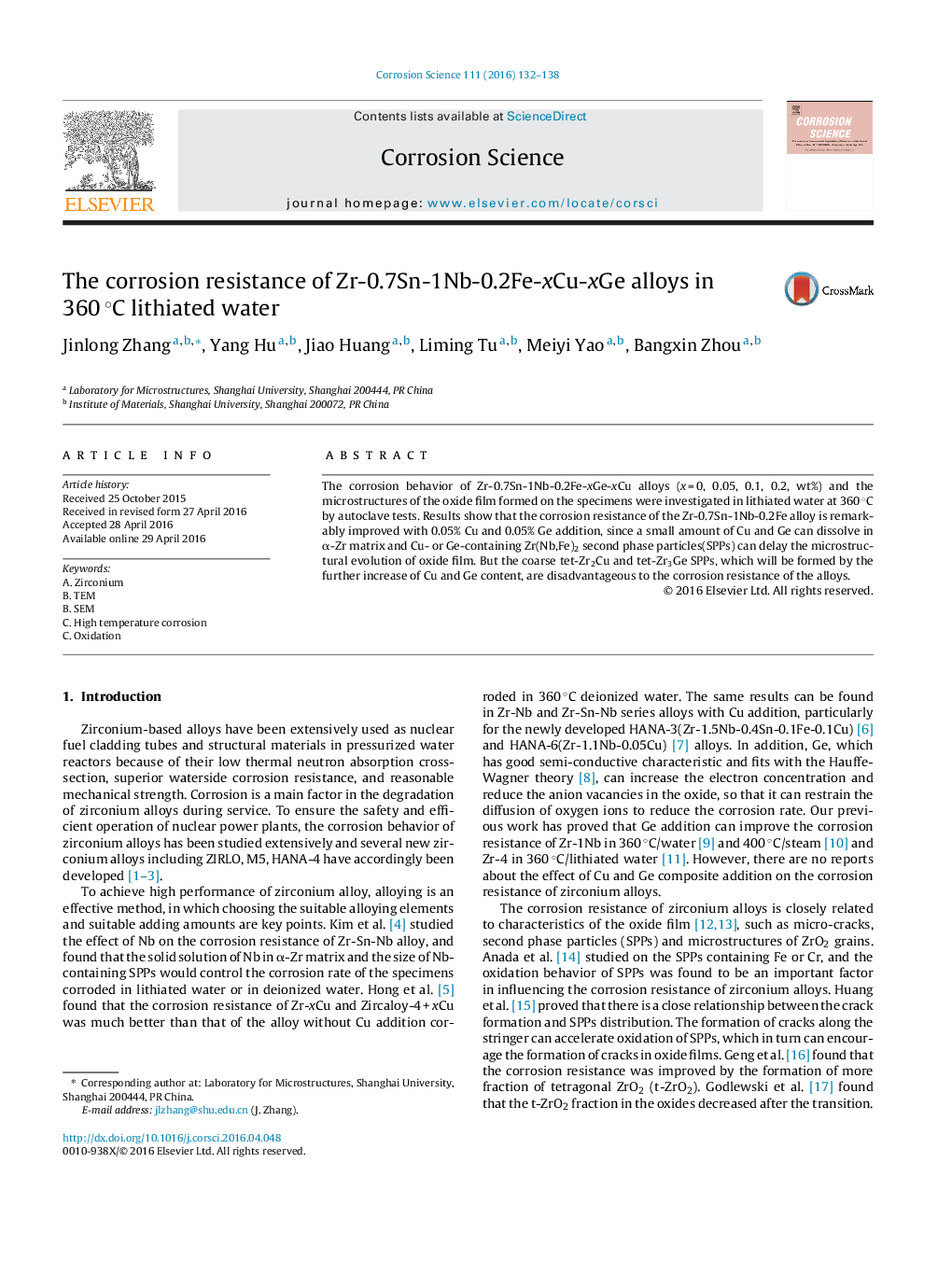| Article ID | Journal | Published Year | Pages | File Type |
|---|---|---|---|---|
| 1468285 | Corrosion Science | 2016 | 7 Pages |
•A small amount of Ge and Cu addition can improve the corrosion resistance.•Corrosion resistance is optimal when Cu and Ge content is 0.05%.•Columnar grains to equiaxed grains evolution was retarded by Cu and Ge addition.•Coarse Zr2Cu and Zr3Ge will precipitate by adding more Cu and Ge.•Cracks can be easily formed around the coarse SPPs in oxide layers.
The corrosion behavior of Zr-0.7Sn-1Nb-0.2Fe-xGe-xCu alloys (x = 0, 0.05, 0.1, 0.2, wt%) and the microstructures of the oxide film formed on the specimens were investigated in lithiated water at 360 °C by autoclave tests. Results show that the corrosion resistance of the Zr-0.7Sn-1Nb-0.2Fe alloy is remarkably improved with 0.05% Cu and 0.05% Ge addition, since a small amount of Cu and Ge can dissolve in α-Zr matrix and Cu- or Ge-containing Zr(Nb,Fe)2 second phase particles(SPPs) can delay the microstructural evolution of oxide film. But the coarse tet-Zr2Cu and tet-Zr3Ge SPPs, which will be formed by the further increase of Cu and Ge content, are disadvantageous to the corrosion resistance of the alloys.
